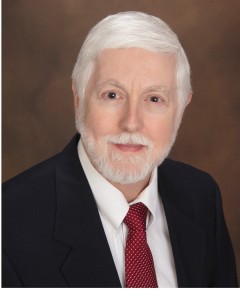[Editor’s Note. This article was originally published at TheTruthAboutGuns.com]
More attention is being paid to the role of mental illness in mass shootings the last several years, reasonably since nearly all the perpetrators seem to have experienced significant reality distortion. Yet mental illness actually plays very little part in the incidence of “gun violence”. (That phrase should mean “violence using guns” but has come to imply, as its anti-gun originators intend, that guns are somehow the cause of violence.) Addressing this question as if the problem is mental illness vs. the availability of guns sets up a false choice. Some (like my fellow psychiatrist, Kimberly Yonkers, MD in a recent Washington Post opinion piece) keep mistaking that one tree for the forest; far more factors underlie violence, gun-related and otherwise. The problem is not mental illness … and it isn’t guns, either.
She’s quite right about the generally good availability of mental health treatment in our country compared to anywhere else in the world. She’s right that even if we could magically get everyone with any mental illness treated, and if that somehow prevented all shootings in which the perpetrator had some mental illness, 96% of American “gun violence” would still occur. We’re both 100% in favor of increasing entry to effective psychiatric treatment, especially for the most severely afflicted, and we know this would reduce some of their very rare violence. But this would make almost no difference in the amount of violence we experience in our society.
Jumping from this point to the conclusion that the only other way to cut down “gun violence” is to restrict access further to guns just isn’t logical. Most academic physicians follow the ossified, over 20 year old anti-gun position of their leadership that “gun violence is a public health issue” (ever notice how often we see that mantra?). Dr. Yonkers gives a passing glance to the problems of “poverty, domestic violence and childhood exposure to bloodshed” as contributors to America’s violence, but doesn’t choose to explore them. Yet these and other sociocultural issues are fundamental to the problem of violence in America.
Physicians don’t read criminology research, so they entirely miss the value of gun use for self-defense (especially the great majority of instances when no shots are fired). They don’t often address the tragic crime epidemic among undisciplined teens and young adults competing for gang and drug turf and money. Neither of these groups represents the mentally ill. They are, respectively, average citizens using guns for one of the purposes for which they’re intended, and criminals misusing guns for their own antisocial reasons. And the mass shooters of the past 20 years, while likely mentally ill, neither engaged in adequate treatment nor could have been stopped from acquiring their weapons by any existing or proposed law.
Like every anti-gun exponent, Dr. Yonkers presents skewed data. Yes, a number of developed countries have lower rates of gun homicide than ours. But the U.S.’s overall homicide rate is still low compared to worldwide rates and we have low (and decreasing) overall violent crime rates compared to nearly everywhere, despite so many other countries denying their citizens the right to gun ownership.
Suicide is very culturally influenced regardless of the availability of guns, and accidents are the clear responsibility of gun users. Consider all this in the context of the U.S.’s virtually unique protection of citizens’ right to keep and bear arms, with the greatest number of privately-owned firearms per person by far. That means we are already one of the safest populations of gun users in the world, even with the bad things that happen.
This is the bigger picture, one which biased observers either can’t see or don’t want seen. But the American public is seeing it, with a clearly positive view of the value of firearms to their lives.
There are so many more productive approaches than more limits on gun ownership, ones that would actually help decrease violence, gun-related and otherwise, such as:
• Enhancing legal firearm use with universal shall-issue laws, which give criminals pause and are associated with decreases in violent crime almost everywhere they’re introduced.
• Consistent prosecution and sentencing for armed crimes and illegal gun purchases.
• Eliminating fantasy “gun-free zones” (simplest, by allowing concealed carry, or at least using armed guards) that are always the preference of madmen wanting to cause the most harm.
• Promoting real gun safety education, meaning how to use and manage firearms safely (via NRA and many other training resources) instead of quoting medical orthodoxy’s only advice: “Don’t keep them in your home but, if you must, lock guns and ammunition in separate places.”
• Teaching all our children that police are our friends when we need help, but to do what they say, and never threaten them.
• And yes, strengthening mental health commitment-to-treatment laws (especially for outpatient treatment) combined with very temporary removal of known weapons based on imminent clinical risk, with every step requiring due process as is currently followed for inpatient commitment.
I just can’t wait for the real “conversation” to begin!

— DRGO editor Robert B. Young, MD is a psychiatrist practicing in Pittsford, NY, an associate clinical professor at the University of Rochester School of Medicine, and a Distinguished Life Fellow of the American Psychiatric Association.

